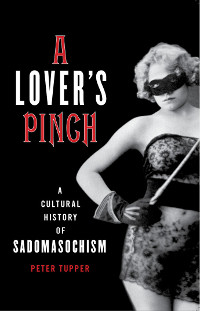Julia… worked, as he had guessed, on the novel-writing machines in the Fiction Department [of the Ministry of Truth]. She enjoyed her work, which consisted chiefly in running and servicing a powerful but tricky electric motor. She was ‘not clever’, but was fond of using her hands and felt at home with machinery. She could describe the whole process of composing a novel, from the general directive issued by the Planning Committee down to the final touching-up by the Rewrite Squad. But she was not interested in the finished product. She ‘didn’t much care for reading’, she said. Books were just a commodity that had to be produced, like jam or bootlaces.
[…]
She had even (an infallible mark of good reputation) been picked out to work in Pornosec, the sub-section of the Fiction Department which turned out cheap pornography for distribution among the proles. It was nicknamed Muck House by the people who worked in it, she remarked. There she had remained for a year, helping to produce booklets in sealed packets with titles like Spanking Stories or One Night in a Girls’ School, to be bought furtively by proletarian youths who were under the impression that they were buying something illegal.
‘What are these books like?’ said Winston curiously.
‘Oh, ghastly rubbish. They’re boring, really. They only have six plots, but they swap them round a bit. Of course I was only on the kaleidoscopes [that composed the text]. I was never in the Rewrite Squad. I’m not literary, dear — not even enough for that.’
He learned with astonishment that all the workers in Pornosec, except the head of the department, were girls. The theory was that men, whose sex instincts were less controllable than those of women, were in greater danger of being corrupted by the filth they handled.
‘They don’t even like having married women there,’ she added. ‘Girls are always supposed to be so pure. Here’s one who isn’t, anyway.’
[George Orwell, Nineteen Eighty-Four, Everyman’s Library edition, Page 136-137]
In Orwell’s dystopia, sex is strongly regulated.
For the Proles, the working class, sex seems to be completely uninhibited, or at least it is from Winston’s perspective. Likewise, Proles are given free reign to indulge in liquor and gambling, and pornography.
For the Outer Party, roughly the middle class, sex is extremely regulated and disregarded. The Party attempts to channel the libido into endless activity, hard work followed by play that is as organized, compulsory and endless as work. No individual attachments or contemplation. Sex itself is reduced to something akin to an unpleasant medical procedure, a “duty to the party,” as Winston’s sexually dysfunctional wife called it.
Whereas Julia is an apolitical hedonist, Winston rhapsodizes about the liberatory potential of his affair with her, describing the way she takes off her dress as “a single, splendid movement” that could bring down the corrupt society.
I saw a book on sexual history in Germany that showed an interesting poster from the early Nazi regime. One half of the poster showed a number of fair-haired nudes in natural settings (walking in meadows or wading in streams), while the other showed dark-haired (Jewish?) women, dressed like showgirls, in indoor, urban settings. The captions read something like, “Bad beauty vs. good beauty.” The problem wasn’t with porn, just right and wrong kinds of porn.
It seems axiomatic that repressive politics leads to repressive sexuality. After all, the Nazis burned the Magnus Hirschfeld archives and gassed homosexuals alongside Jews. But it doesn’t necessarily have to be. Orwell’s Oceania is not universally sexually repressive, but it appears that sexuality of the Outer Party (i.e. the middle class) is tightly repressed, so as not to interfere with work or encourage dissent, but encouraged the opposite way for the largely expendable Proles, as an opiate of the mostly non-productive masses.
The other side of this issue is violence in Oceania. There a lot of public violence, both the mass execution of internal and external enemies, and the display of propaganda films with graphic violence. There’s also a lot of “private violence,” in the Ministry of Love, with torture and executions. Note that there is a significant disconnect between the two realms of violence, that the public executions are purely for show while the real work of suppressing resistance is done in secret, its victims completely disappeared.
Foucault talked about how, over the past few centuries in the West, the process of correcting social deviance has been hidden away from public view in institutions like prisons, hospitals, asylums, etc. In Orwell’s book, the state’s real work of violence is done in private, while the public work of executions, confessions and so on are just for show. Yet, Winston seems to have an instinctive knowledge of the “technology” of the Thought Police and the Ministry of Love, their instruments and techniques. Presumably there are rumors floating around. The separation can’t be perfect.
So, is Julia busy turning out porn that draws on the imagery of eroticized power from their own society?

